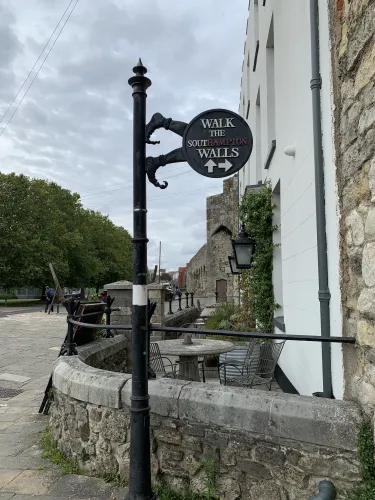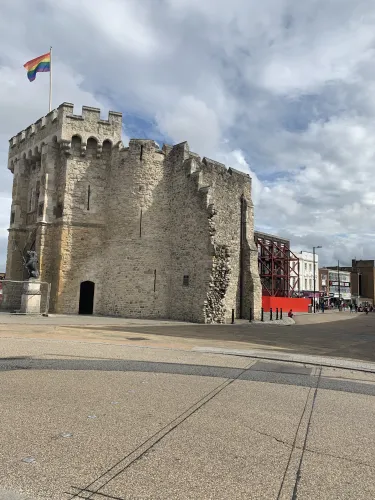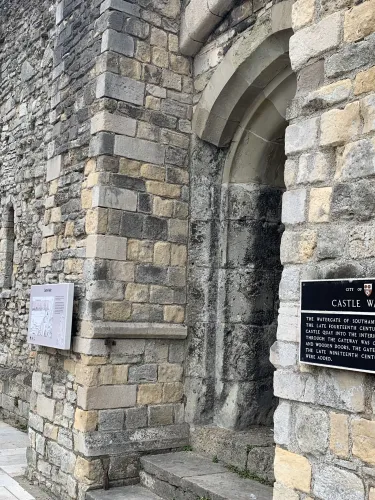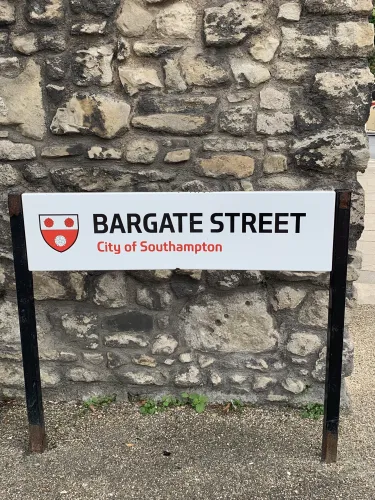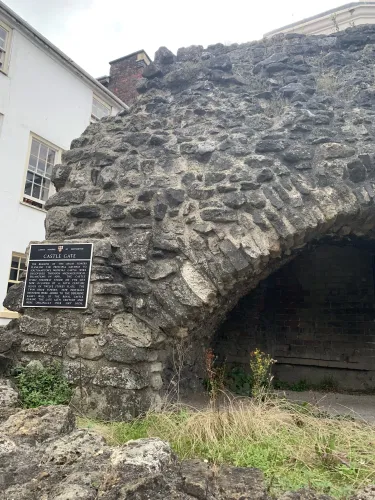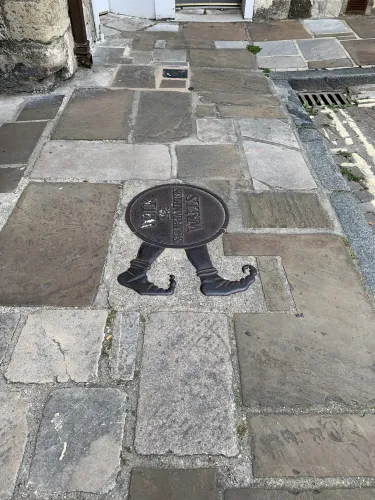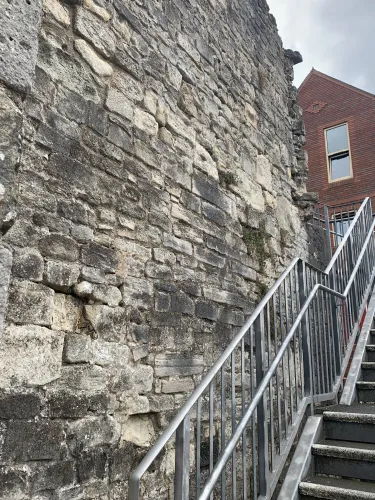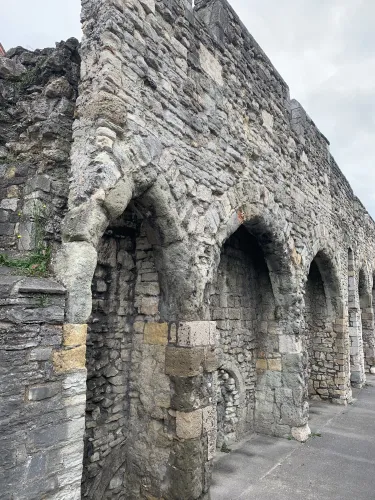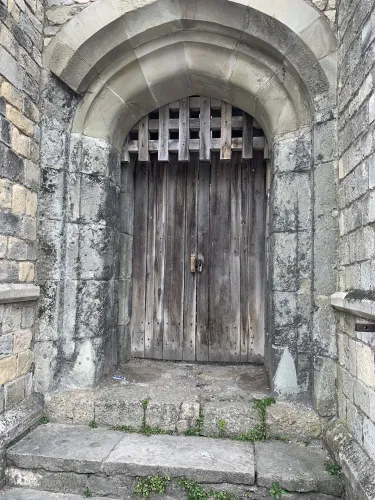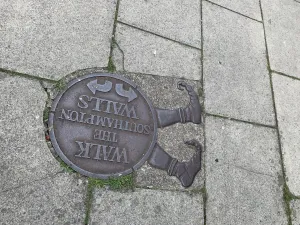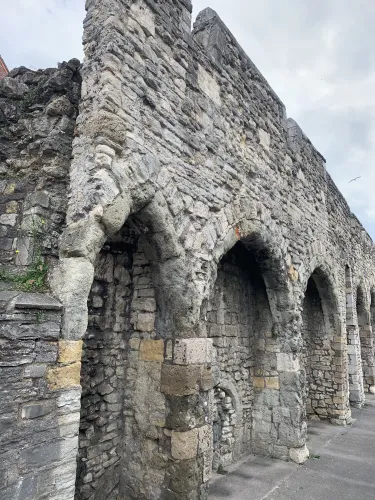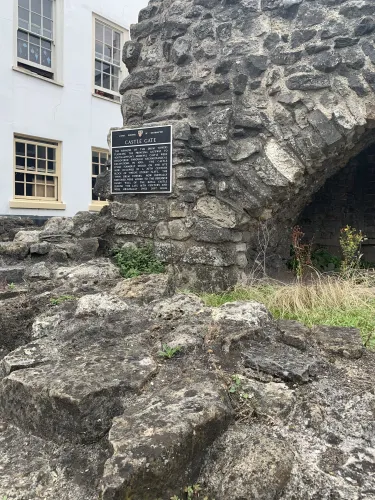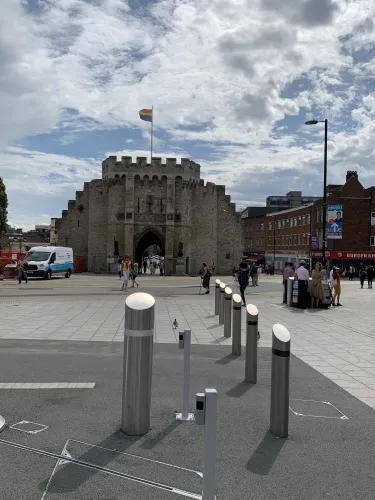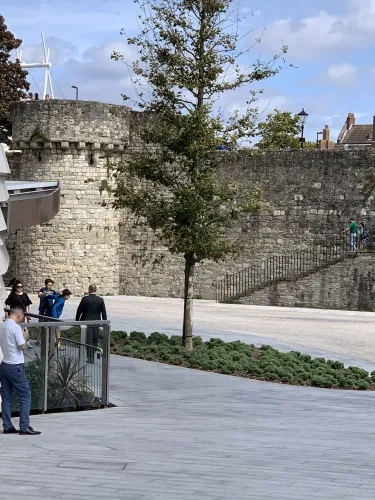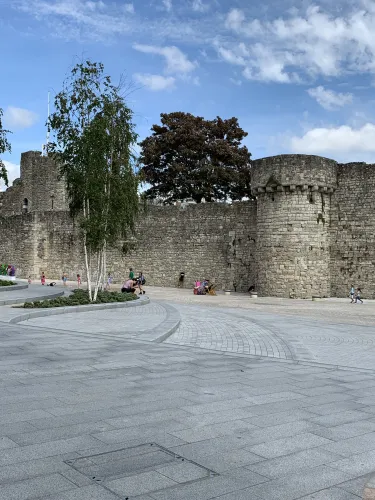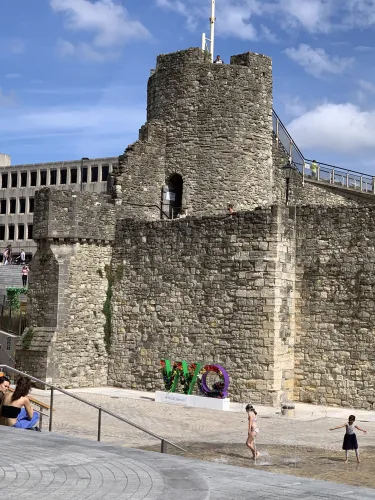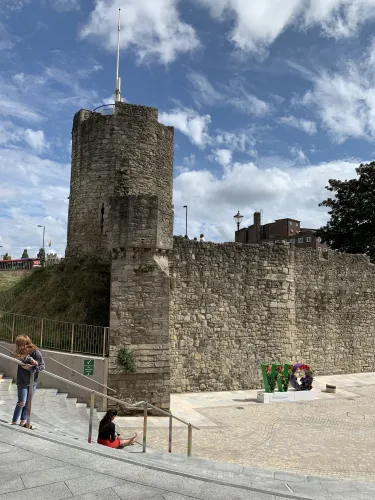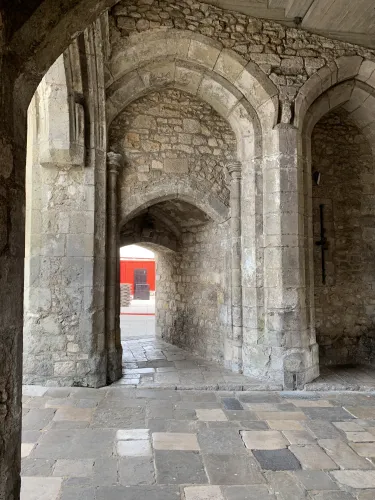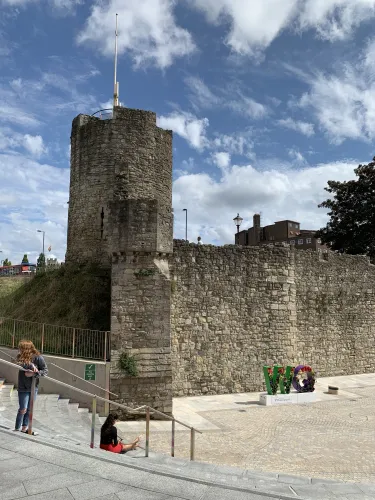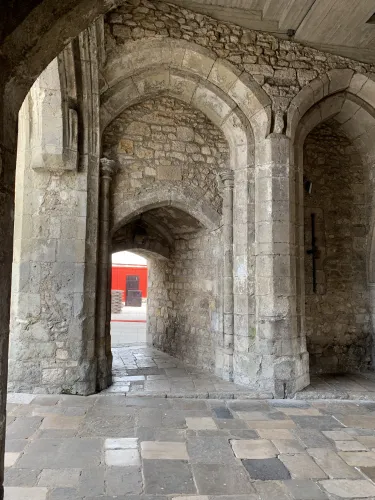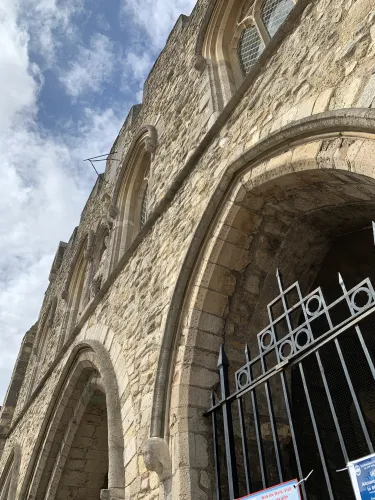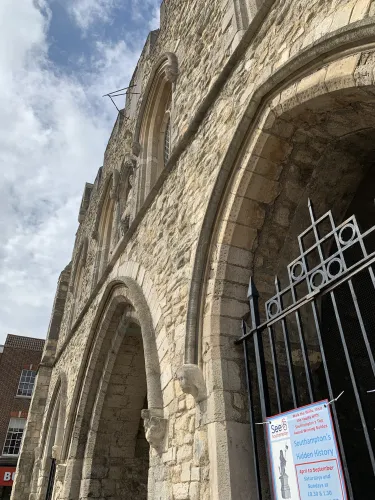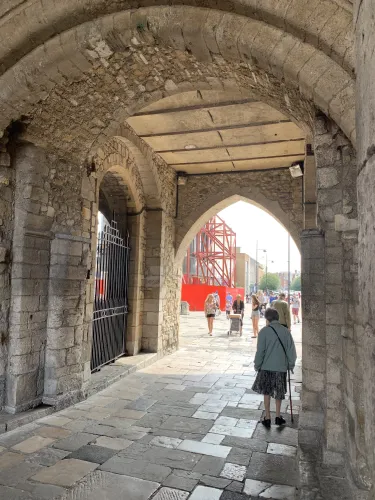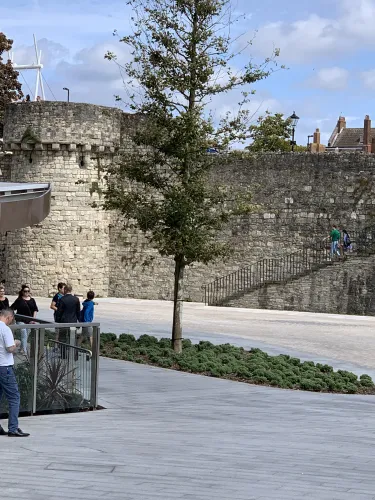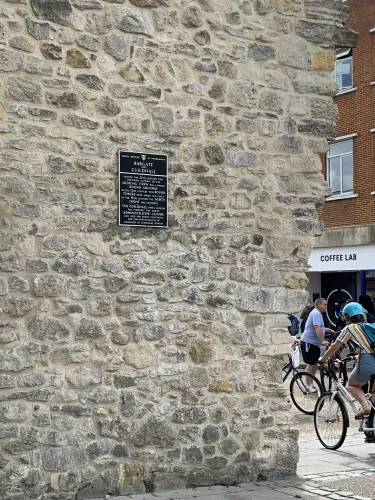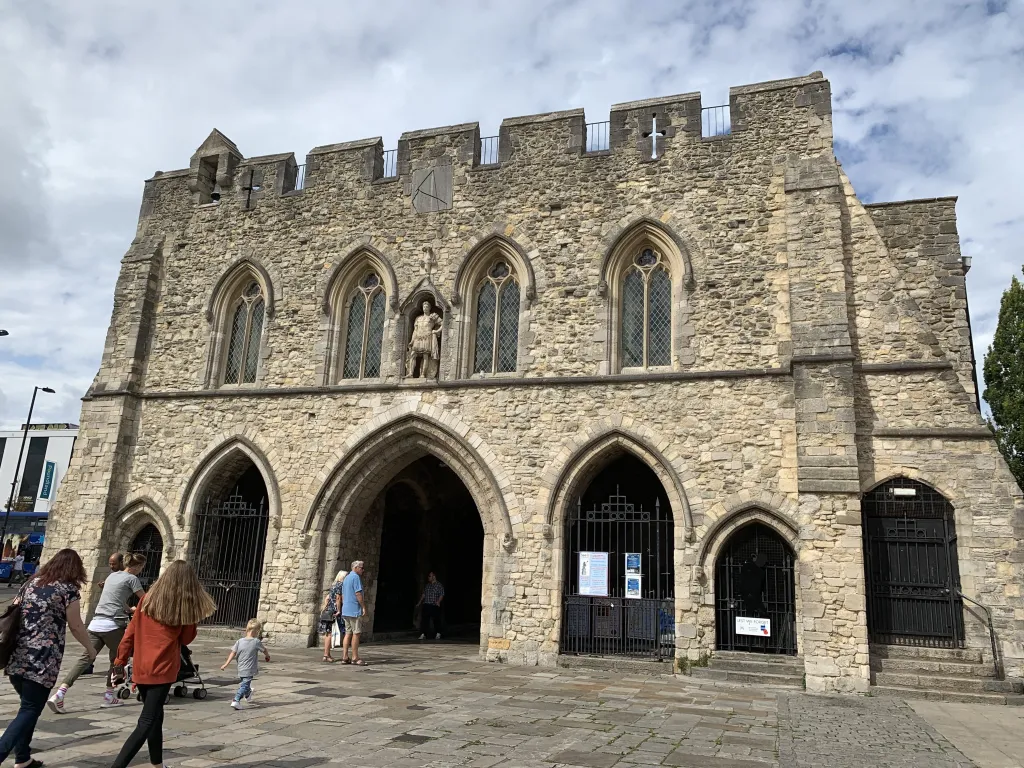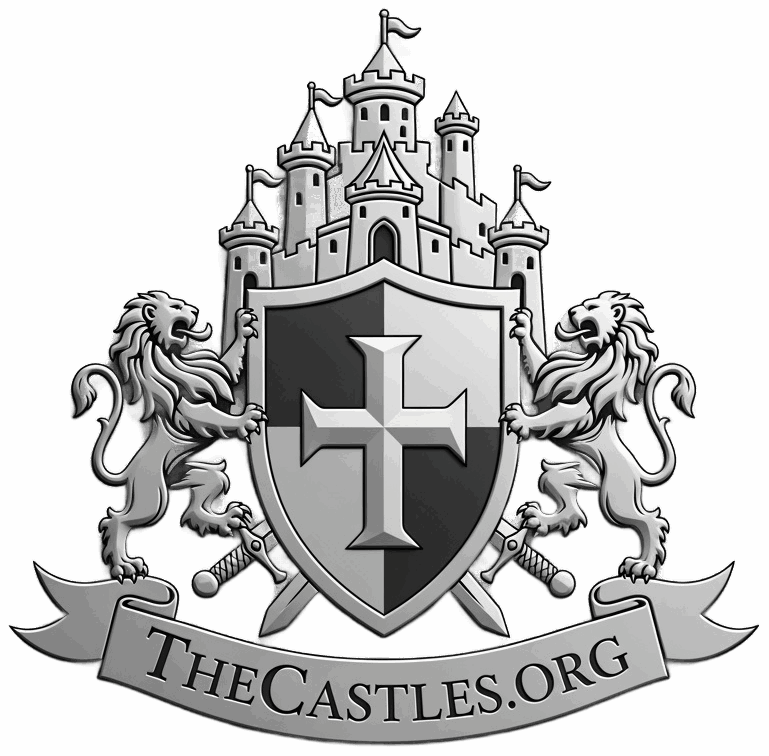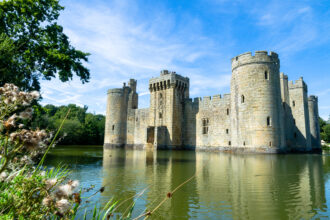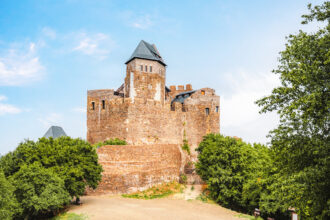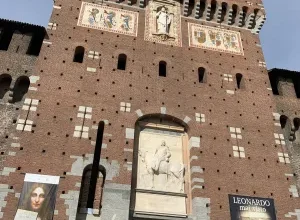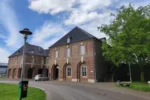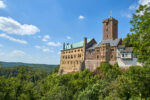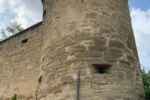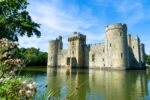Southampton became world famous in 1912 when the Titanic set sail on its fateful maiden voyage from there. But Southampton is much more than just the city of the Titanic. It is the most important port city on the south coast of England, with a history dating back to the Roman occupation. Roman and Anglo-Saxon settlements around Southampton were fortified with walls and ditches in earlier times. The famous Old City Walls of Southampton were not built until the 10th century. I was eager to explore this relic of days gone by during my stay in Southampton. So I made my way to the medieval city gate, the Bargate, at the edge of High Street. It was built by the Normans in 1180 and was considered the main entrance to the city center, as most visitors to Southampton arrived from the north. For this reason, it was also known as the North Gate. When I arrived there, I was impressed by this mighty city gate with its large archway, which is one of Southampton’s landmarks and attractions. The city gate was part of the city fortifications, known as the Town Walls, and served as a defense against enemy attacks. Bargate kept intruders out, and any strangers who remained behind the locked gates at night could find food and lodging in the inns along Above Bar Street. The imposing gate is adorned with a statue of King George III dressed in a Roman toga. During the 12th century, this northern gate to the medieval city was a single archway. In the 13th century, two round towers were added, and in the early 15th century, the north front was extended. Bargate is also home to the town hall. The town hall, which is now a museum, was formerly the administrative center of the city and was used for public events and performances. Southampton had a team of artillerymen who defended the city, and three cannons were stationed at Bargate. I explored this historic gate for quite a while before heading to the medieval town walls. The medieval city walls are one of the best-preserved city walls in England. They were extended and reinforced on the orders of George III after the French troops raided the city in 1338 to protect Southampton from further enemy attacks. I started my tour of the old town from Bargate and came to the Watchpoint. Here stood a figure looking out over the mighty city wall. This symbolizes a person who sounded the alarm in the event of an attack. This point is inscribed with the words “In God is my hope R.B. 1605.” After that, I went to the “Forty Steps.” These were built along the west wall in 1853 to facilitate access to the city. Then I reached the Fang Tower. It was the last significant extension of the medieval city wall and was built at the beginning of the 15th century for the transport of weapons. There was probably a weapon in the vaulted chamber that could be fired by one of three inverted “keyhole cannons” and a larger weapon above it. During the war from 1939 to 1945, an anti-aircraft machine gun was mounted on the tower. This was probably the last use of the city wall for defensive purposes. I looked at this tower for quite some time and was fascinated by this ancient defense concept. On my way, I discovered an information board for the Castle Wardrobe Tower. This tower was built at the end of the 14th century at the southwestern corner of Southampton Castle. The tower originally had three stories and housed the toilet for the castle hall on the ground floor and first floor, which drained into the sea via a sluice that was flushed clean by the tide. The tower was demolished along with the adjacent city wall in the late nineteenth century, and today only a commemorative plaque remains to mark its location. My path then led me to Castle Gate, which provided direct access to the city. The remains of its drum towers, flanking the main gate to Southampton’s medieval castle, were discovered in 1961 during archaeological excavations. The castle itself once stood on the site of a 12-story 20th-century apartment block. The partially restored twin drum towers were added to the defensive wall of the royal castle in the late 14th century and were originally over 20 feet high. It was fascinating to explore this defensive structure and read about its history on the information boards. The ancient city wall was built in stages over more than 300 years, and its remains still dominate the cityscape of Southampton, which was once a thriving trading city for wool and wine. My next stop was Castle Watergate. The Watergate of Southampton Castle was built at the end of the 14th century to restrict access from the castle quay to the interior of the castle. Passage through the gate was controlled by a portcullis and wooden doors. The gate was partially restored at the end of the 19th century when the buttresses were added. After that, I discovered the Castle Vault. The Castle Vault is a castle vault where the king’s valuable goods, such as wine imported from Bordeaux, were stored. In the Middle Ages, wine merchants had to pay their taxes in wine. For every ten tons or barrels of wine brought to the port, one was unloaded at the castle quay and taken to the king’s vault. Merchants stored the remaining wine in vaults under their houses. This was an interesting story that revealed itself to me here and showed the almighty position of the king in the Middle Ages. After that, my path led me to West Quay and Biddle’s Gate. In the Middle Ages, this was a bustling waterfront promenade with the houses of wealthy merchants. After the French invasion in 1338, the merchants had to move and the walls of their houses were blocked to build the city walls. Even today, you can still see the outlines of the medieval doors and windows. Biddle’s Gate was locked at night to keep out attackers and was maintained at great expense. In 1489, a new lock was built for almost £600 to make Southampton even more secure. My next stop was the arcades. On a quiet Sunday morning in October 1338, 50 ships sailed silently into Southampton harbor while the town’s inhabitants were in church. French and Genoese soldiers and mercenaries stormed the town, attacked the residents, looted their possessions, and set buildings on fire. When Edward III heard about the raid and the loss of his wine and wool, he angrily ordered a wall to be built to protect against future attacks. Merchants were forced to block the entrance to their warehouses on the quay to build what is now the defensive arcade. I was impressed by these massive arcades and admired them for quite some time. My next stop was Blue Anchor Lane. This was used to bring imported goods from the quay into the medieval town and to the market at St. Michael’s Square. The stone arch is part of the town wall and the portcullis slit is still visible. After that, I discovered the Westgate with its monument to the Mayflower and the Speedwell, which stopped in the harbor on their way to America in 1620. The Westgate was built after the French invasion of 1338 and was an important entrance to the medieval city. This important western gate led directly to the West Quay, which for centuries was the only commercial quay the city possessed. In 1415, some of Henry V’s armies marched through this archway on their way to Agincourt. I was overwhelmed by this sophisticated defensive structure and its history. The historic remains of the city wall left a lasting impression on me and gave me an insight into the history of Southampton. For the first time, I realized the great importance of this city and its port in the Middle Ages. Incidentally, the city offers regular guided tours of the ancient city wall with its beautiful city gate.
